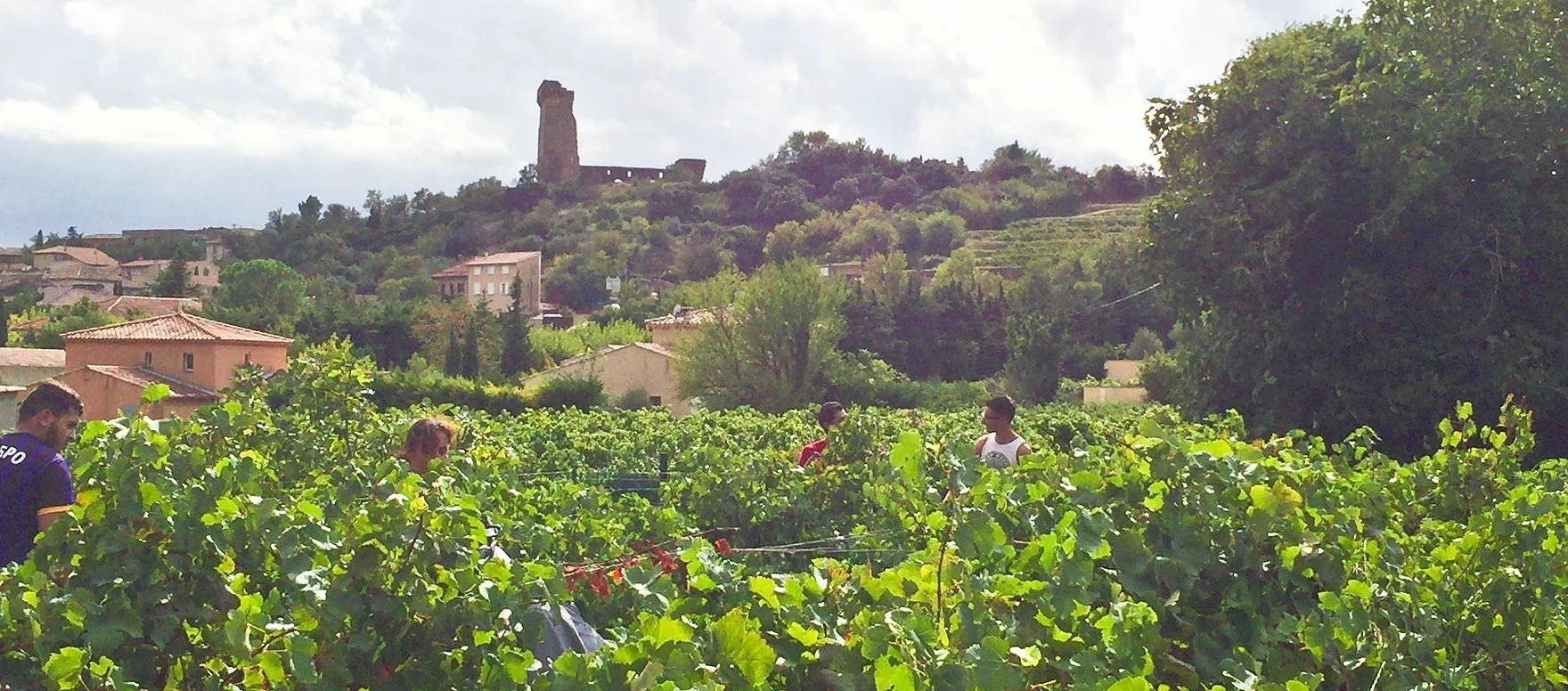
-pictured above, Pegau, from catchingwines.com
For this month’s club we’re thinking loosely about the holidays, but we’re not focussing solely on them. We think the wines we chose are timeless, and transcend seasons and trends, and the two Slovenians may challenge or defy any existing expectations. Ben Stroup wrote up the notes, which are again quite entertaining and informative. We think you’ll enjoy it all!
Cheers, and happy sipping!
Chateau Pegau Cuvée Maclura Côtes-du-Rhône 2020 $23.99
Chateau Pegau Cuvée Lône Côtes-du-Rhône 2021 $23.99

Something very bad happened to Benedetto Caetani, papal name Boniface VIII. In the early 14th century, he was playing hardball with the temporal powers of Europe, as was the style at the time, asserting the church's right to not have its lunch stolen by upstart kings and dukes. For that he was brutally beaten, as happens when you tell a guy with an army (Philip IV of France and Navarre) that not only are you not going to give up said lunch, you're actually going to send him and anyone who talks to him to hell, which is real, and he will suffer eternally, in a very real sense. Benedetto didn't die from said beating immediately, so it's a little much to say "he was beaten to death by the French king's goons", and had he lived in a more antibiotically blessed era he probably would have been fine. But he didn’t, so he wasn’t, and he died, and for the next 66 years and change, the papacy resided at Avignon instead of Rome, and Philip IV and his succeeding Philips had their way (until the English got involved and a very, very long war ensued).
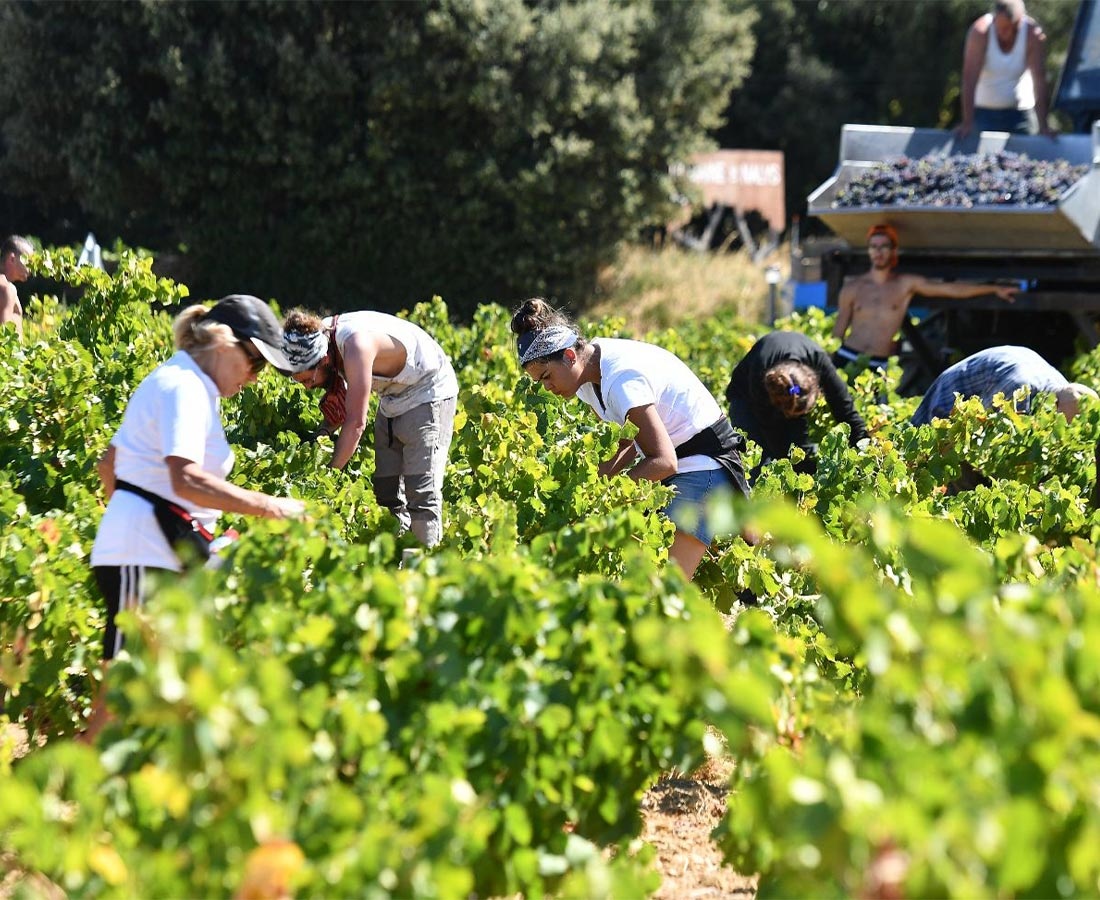
While the Popes were in their Babylonian Captivity, under the thumb of the French king, a palace was built north of Avignon, a new palace for the Pope, and since these Popes were French, their new palace was referred to as Chateuneuf-du-Pape. They didn't do very much winemaking there at that point, though vines were planted to supplement the wine imported from Burgundy (then independent). Chateauneuf-du-Pape as a wine-growing appellation is in fact an invention of the 20th century, despite the charming backstory to the name of the place itself. In fact, CDP was one of the very first wine regions to have an appellation at all. In 1923, tired of having to differentiate his wines (well, the wines he'd married into), "Baron" Pierre Le Roy of the CDP estate Chateau Fortia struck up a set of rules with fellow growers about what could be called Côtes-du-Rhône, specifying minimum alcohol and permitted grape varieties, banning chaptalization—the addition of sugar—and delimiting the geographical limits of various subregions, including Chateauneuf-du-Pape. This ad-hoc organization represented the first stirrings of the system that's now the French Appellation d'Origine Contrôlée, a model exported worldwide.
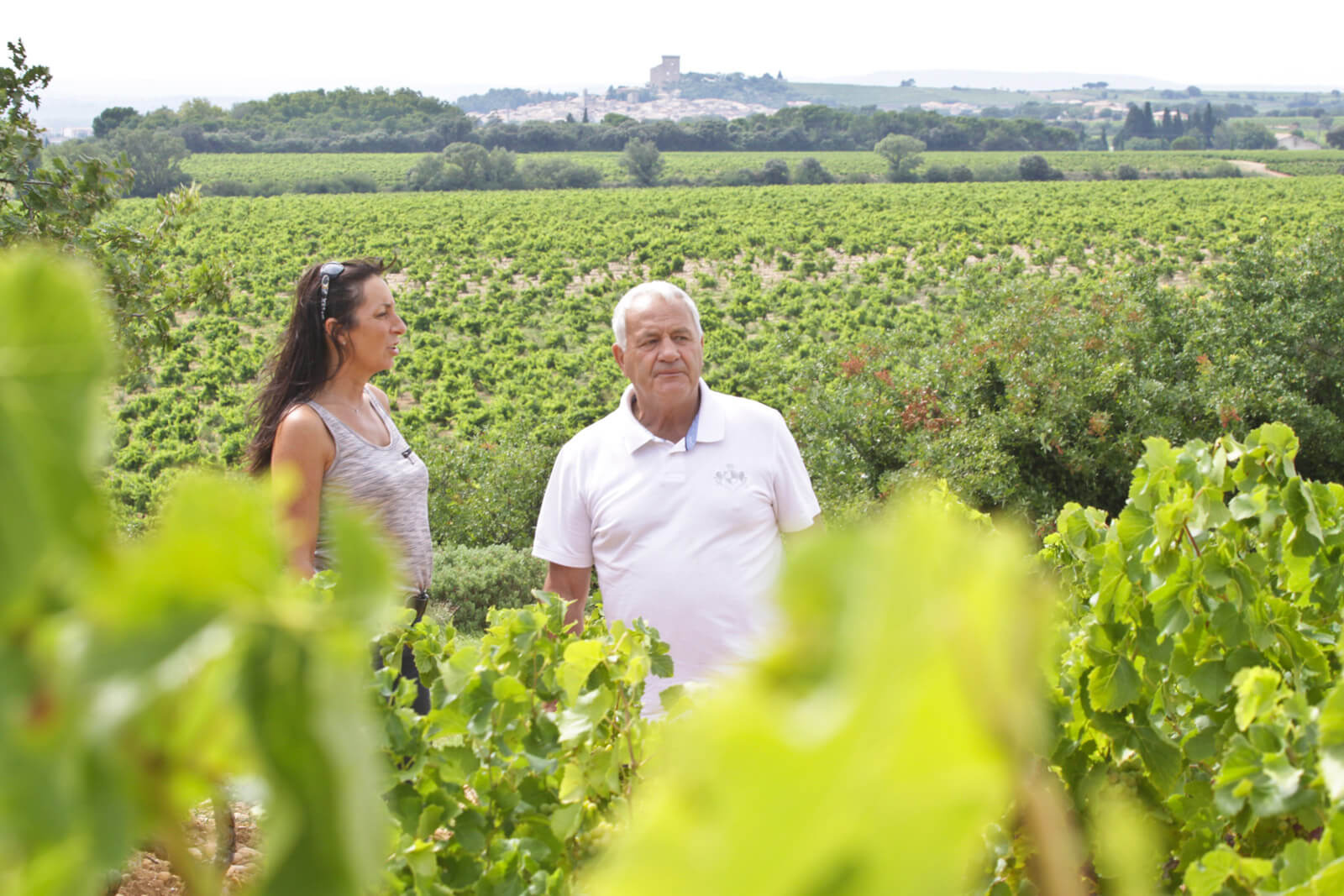
While this month's wine club doesn't include a Chateauneuf-du-Pape per se (thanks to those strict AOC regulations), it's got two charming Côtes-du-Rhônes from just outside Chateuneuf, made by a producer raised and based in Chateauneuf, Laurence Feraud. She and her father, Paul, founded a CDP winery named Domaine Pegau in the late '80s, but a little over ten years ago she had the opportunity to buy a large estate just south of the appellation's borders, so she now heads a separate estate called Chateau Pegau—named for the rundown chateau on the site of the vineyard. Laurence herself is a character it seems, as the importer notes: "I often say that if I was in a bar fight, I would want Laurence Feraud to be in front of me. Then again, she’d probably be the one starting the fight."

That sort of verve is on display in both of these wines, particularly the red, Chateau Pegau Cuvée Maclura, a 2020 Côtes-du-Rhône. Maclura is named after a type of Osage Orange tree found planted on the property. Feraud herself has no idea how a tree from the middle of North America got there but liked the name well enough. Maclura is a classic Côtes-du-Rhône blend of Grenache, Syrah, and Mourvedre, with just a little Cinsault. For the uninitiated, Grenache usually makes up the bulk of southern Rhone wines—it’s the Chateauneuf-du-Pape grape par excellence, per Jancis Robinson. It can be flabby if left unattended, producing a pleasant and fruited but not particularly appealing wine, but it responds very well to stress—heavy pruning and dry farming create an incredible spicy-yet-soft intensity. That's the first 60% of the blend, the next quarter coming from Syrah, which provides more tannin and an anise-like baking spice complexity. The remaining 10% and 5% of the blend are Mourvedre and Cinsault, added for herbaceous garrigue aroma and depth. Maclura is hand harvested, then the blend is cofermented in whole clusters—this means Feraud doesn't have a chance to taste and blend to her specifications. Instead, this entry level CDR is representative of the vintage for the estate as a whole. Fermentation is spontaneous, with no added yeast, and after the initial two weeks, the wine is aged in enamel tanks. It's rich on the nose, with lots of black fruit like black currant and plum, licorice, and red flowers. The body is medium-full, and the tannins are assertive but gently so. That is, you'll notice a grip but won't be reaching for a crowbar to pry your teeth from your lips, the way you might with a full-blown Chateauneuf-du-Pape. The acidity and a slightly bitter finish make it a great pair for rich-but simple-fare. The classic pairing is steak frites, but it wouldn't be too bad with a heavily peppered turkey leg, cooked confit. Take care, it's 14.5% alcohol, but based on my experience, it lasts fine for a few days on the counter, so don't feel pressured to pound it down.
The white blend from Pegau is called Cuvée Lône, a blend of Clairette, Bourbolenc, Grenache Blanc, and Ugni Blanc. As with Maclura, this is a fairly standard CDR blend, with the Clairette playing the leading role at 40% of the blend. "A decidedly old-fashioned variety", Robinson says, but in this case, old-fashioned is a good thing. Clairette is a fuller bodied white grape, and, as with Grenache, can be flabby if not cared for properly. Done well, it provides texture and a fresh bitterness. The Bourbolenc (30%) bolsters the acidity and lends dimension with a faint smokiness, the Grenache Blanc (20%) adds a citrus note, and the Ugni Blanc, a.k.a. Trebbiano, at just 10% of the blend, is added solely for acidity. Hand harvested and fermented spontaneously, the wine sees a one month temperature controlled fermentation, followed by just five months of elevage in a stainless steel tank before bottling. Despite Jancis' warning, this wine is lively, fresh as a spring chicken. It's got tons of apricot and nectarine on the nose, with even more of that woody herbal garrigue on the palate and surprising acidity for such a full bodied white. An old-fashioned variety deserves an old-fashioned meal, like fish baked in cream sauce with dijon mustard. As a child, I might’ve turned my nose up at a meal like this. Not anymore, I'm much wiser now; I think about things like the Avignon Papacy.
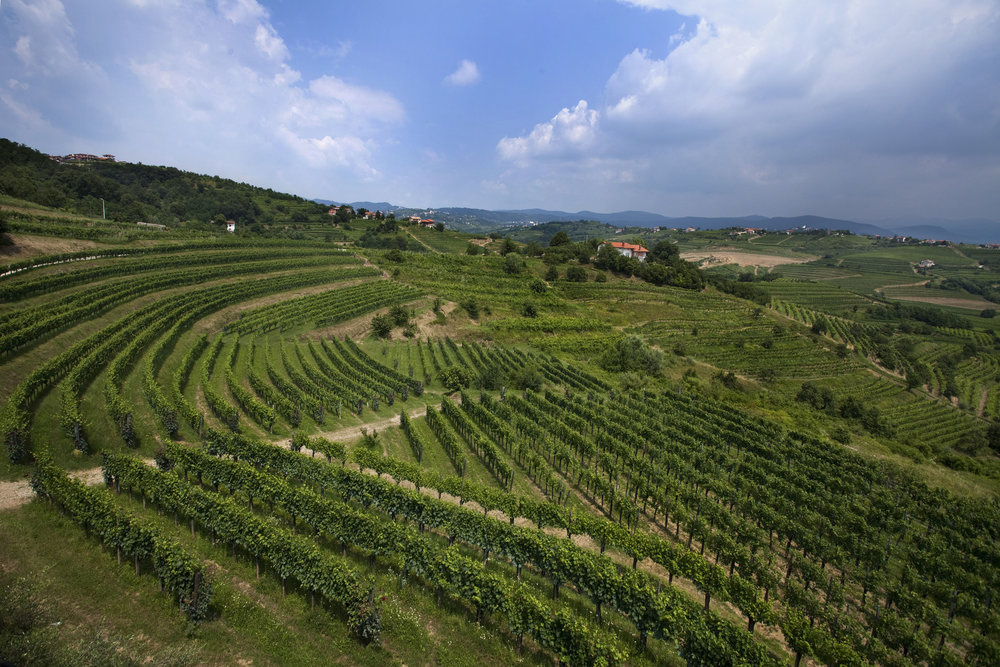
Movia Sivi Pinot Grigio - Brda 2021 $29.99
Movia Cabernet Sauvignon - Brda 2019 $28.99
Slovenia doesn't quite have the cachet of Chateauneuf-du-Pape, but it's no less storied. Our pick for the next two wines, Movia (vineyards pictured above), has been in operation since 1820, and is still run by the Kristančič family. Considering Slovenia didn't exist as an independent nation until 1991, that's quite an achievement. Aleš Kristančič credits this longevity to a historical friendship. During World War II, his grandfather Anton left the vines to become a partisan—a left-wing guerrilla—fighting the occupying Nazis and their Ustaše puppets. Anton rose in the ranks and became friendly with Marshal Tito, so when the war was won, Movia escaped collectivization. Instead of producing cheap commodity grapes destined for export wine or brandy, they made wine the way they had been making it for a hundred years, and Tito was a fan!
Click here to see Slovenian wine map, and more info on Slovenian wine and vineyards.
It wasn't just the turmoil of the World War II that put stress on the winery, as the Cold War came with its own complications. Movia is located in a wine region known as Goriška Brda, which borders the Italian wine region of Collio Goriziano—two names for the same hills surrounding the town of Gorizia. Gorizia was once on the Austrian side of the border, but was given to Italy after World War I, and after the Second World War it was compared to Berlin, with the border between communist east and capitalist west running right through town. The border was militarized, and the two regions were separated. North of Gorizia, Movia's cellars are a walk down the block from the Italian border, five minutes by Google's estimate, and their 25 hectares of vines span both sides. Winemaking in this divided region has gotten a little easier since the fall of communism, and even moreso since the Schengen Agreement came into effect in Slovenia in 2007, but there are still some official hang-ups: wine from grapes grown on one side of the border and vinified on the other cannot be referred to under either appellation, neither as Brda wine nor Collio—something regional bureaucrats are working to address, slowly but surely.

Today, Aleš Kristančič and his son Lan work in the knowledge that though the borders may have shifted, the people and the land have remained the same. They're at the forefront of bringing multilingual Brda out of the war-torn 20th century and onto the international stage, but in winemaking, moving out of the 20th century often means moving back to the 19th! Movia is certified organic, and they operate biodynamically, though without certification. All of their grapes are hand harvested and farmed without irrigation, two factors critical to making wines of intensity that speak to a place, and factors that complicate the economics of winemaking, since hand harvesting requires hands to do the harvest, and dry farming greatly increases the risks associated with bad weather. No machines, no irrigation, no petrochemical pesticides, just how Anton's dedek did it.
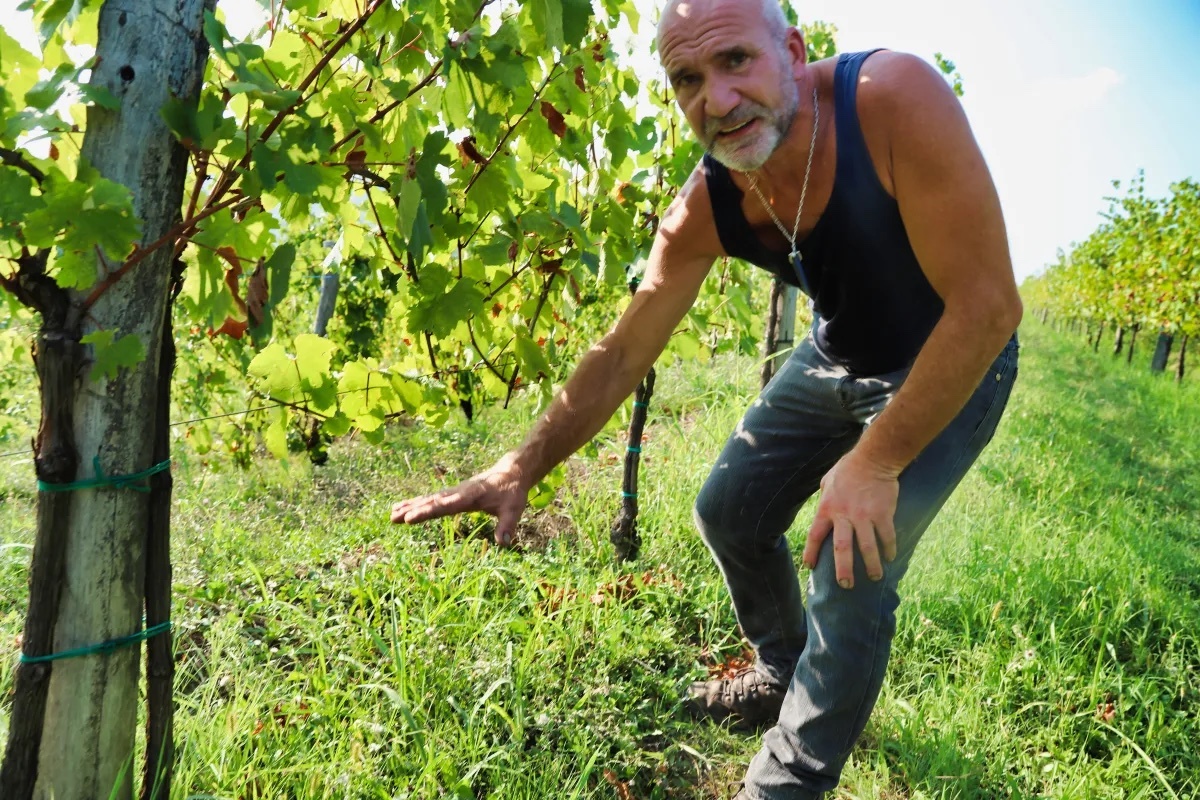
Pinot Grigio is fairly common to Brda, since the region borders the Italian province of Friuli Venezia Giulia, just east of the Veneto, where it's most famously grown. This bottle from Movia is indicative of winemaking in the region, with just a touch of skin contact for aroma and texture. Not quite a classic Veneto ramato, the wine only sees six hours of maceration before being pressed and removed to a mix of barrels and stainless steel tanks. It sits on the lees for 6 months before racking and bottling, which adds further texture. This isn't the whisper quiet Pinot Grigio you may think you know! It's touch closer to an Alsatian style, richer and spicier and more suited to landlocked Slovenian cuisine than spaghetti alla vongole. Still, you could do clams, but add a little linguica for a Rhode Island twist—it'll play well with the extra heat and fat.
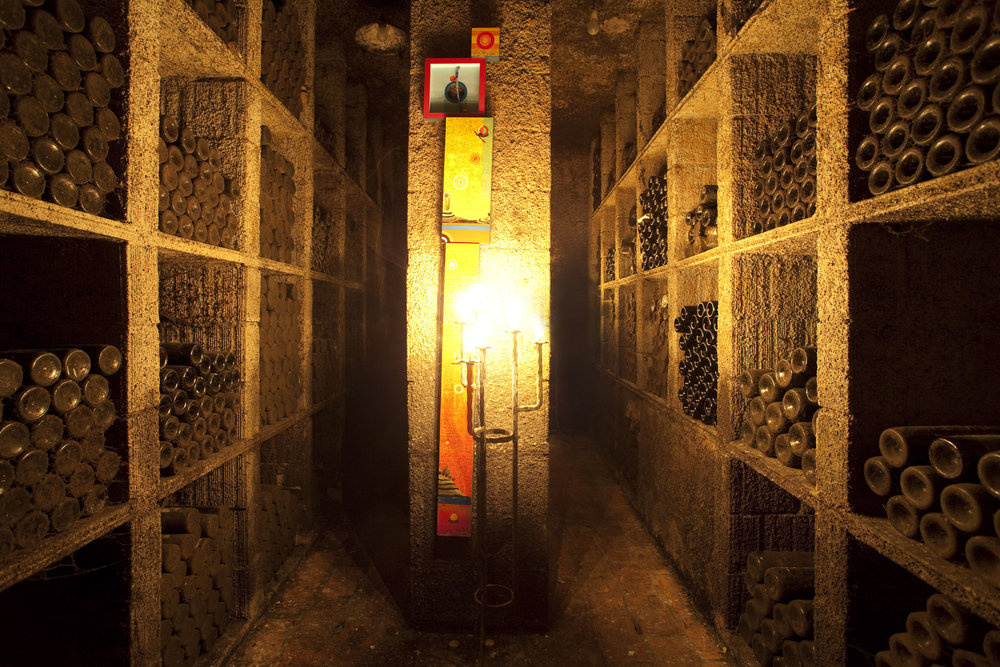
The other Movia bottle we have for you is a 2019 Cabernet Sauvignon. It's only 12.5% ABV, so don't recoil! This isn't a jammy oak bomb, we wouldn't do that to you. It's a bottle like this that reminds one why Cabernet Sauvignon is one of the biggest grapes in the world, it's so full of violets and tobacco and blueberries and plums you can't help but recant your prejudices. Cab is good. The vines are relatively young, just about as young as Slovenia itself, only 30 or so years old. They get a three to four week maceration, and fermentation is assisted by a pied de cuve, a sort of natural fermentation jumpstart where the winemaker harvests some grapes early and takes the spontaneous fermentation from that portion to ensure that the full crop gets a surefire ferment. The wine spends nearly four years in neutral oak barrels before bottling, so the tannins are rounder, more gentle and extended. The acidity is what holds the wine together, so it’s very food friendly. Not a bad bottle to have as backup for the uncle who demands a Cabernet at Thanksgiving, it might be more suited to a less traditional holiday dinner—mushroom wellington, anyone?
Movia is also known for their undisgorged sparkling wine...we have a couple vintages in stock. For the adventurous, here's a video on how to open them.
